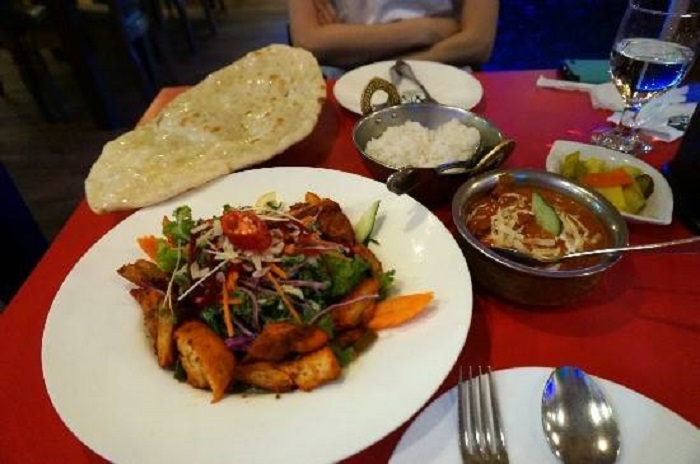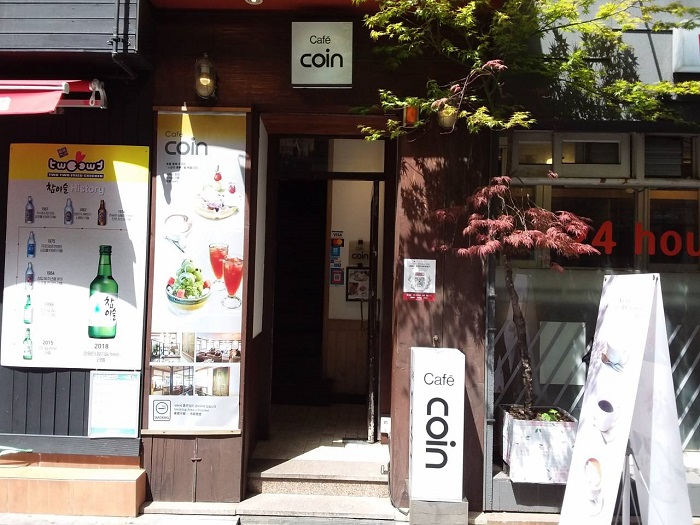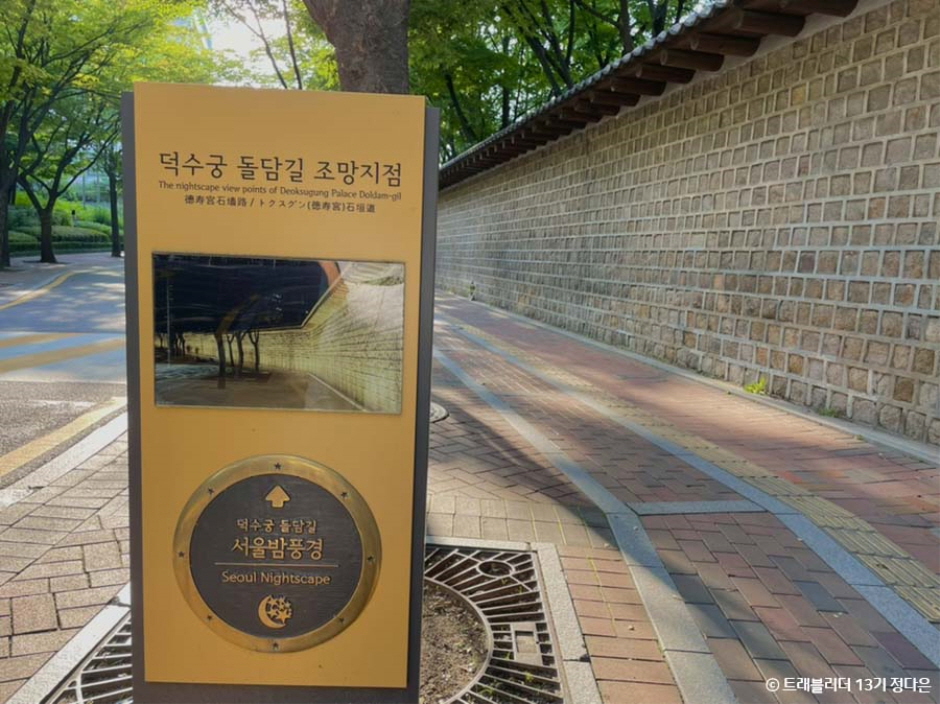ABC-Mart - Seoul National University Station Branch [Tax Refund Shop] (ABC마트 서울대점)
11.7Km 2024-06-27
172, Gwanak-ro, Gwanak-gu, Seoul
-
Ssukgogae (쑥고개)
11.7Km 2024-02-15
B1, 16 Gwanak-ro 14-gil, Gwanak-gu, Seoul
Ssukgogae is a Korean and Western fusion restaurant situated at the beginning of Syarosu-gil. The standout menu item is the tong samgyeop kimchi jjim (braised whole pork belly with kimchi), a robust and spicy dish prepared with whole pork belly and soft bean curd. Another crowd-pleaser is the chicken cheongyang cream pasta (deep-fried chicken and cheongyang chili pepper cream pasta), featuring crispy fried shrimp and deep-fried chicken generously layered on soy cream sauce. The waffle gamja jeon (potato pancake), crispy and adorned with grated grana padano cheese, also earns acclaim. Nearby attractions encompass Nakseongsan Mountain, Nakseongdae Park, and Gwaneumsa Temple.
OTSAL (옷살)
11.7Km 2021-03-29
164, Gwanak-ro, Gwanak-gu, Seoul
+82-2-882-6527
This is where a local Mexican chef does the cooking. The best menu at this restaurant is curry. This Korean dishes restaurant is located in Gwanak-gu, Seoul.
Trium House (주식회사 트리움하우스)
11.7Km 2025-07-07
2F, Na-dong, 13-8 Jangmi-ro 92beon-gil, Bundang-gu, Seongnam-si, Gyeonggi-do
Trium House, established in 2008, specializes in customized medical tourism services for customers at home and aboard. It provides comprehensive medical tourism products for foreign patients, combining tourism and rest in addition to medical services (e.g., preliminary disease diagnosis, treatment, post-management).
Major services include Western and traditional Korean medical tourism, business tours, and general travel services. They provide the best services customized to customers' needs, with professional staff members versed in different language. Trium House has become a trusted medical tourism partner that has been designated a medical tourism partner for the Korea Medical Tourism Festival and for Seongnam City.
TUBAn [Tax Refund Shop] (주식회사 투바앤)
11.7Km 2024-04-23
1955, Goyang-daero, Deogyang-gu, Goyang-si, Gyeonggi-do
-
Gwanghwamun Gate (광화문)
11.8Km 2024-12-04
161 Sajik-ro, Jongno-gu, Seoul
+82-2-3700-3900
Built in 1395 under the reign of King Taejo, the first king of the Joseon dynasty, Gwanghwamun Gate is the southern gate of Gyeongbokgung Palace. It is also the main gate of the palace, therefore larger and fancier in comparison to the other gates. Gwanghwamun Gate consists of three arched gates; the center gate was used by the king, while the other two were used by the crown prince and royal officials. The tall granite walls of the gate serve as a platform for the wooden gate tower that watches over the city. The gate has a sign with its name written at the top center of the gate tower.
Gwanghwamun Gate went through several damages and restorations over the course of history. It was first severely damaged during the Imjin War (1592-1598) and was not restored until the reconstruction of Gyeongbokgung Palace in 1864. Under the Japanese administration, the gate was demolished and relocated to the north of the palace's eastern gate, followed by series of damages during the Korean War (1950-1953). In 1968, Gwanghwamun Gate was relocated back to the south of the palace and was rebuilt using concrete; however, the gate’s position was shifted a few meters away from its original location. In 2006, a major reconstruction project took place to restore Gwanghwamun Gate to its original state and location, disassembling the structure completely and replacing concrete with granite and wood. After three years and eight months of construction, Gwanghwamun Gate was fully restored to its original form and was open to the public on August 15, 2010.
ER Newcore Outlets - Yatap Branch [Tax Refund Shop] (ER 뉴코아아울렛 야탑)
11.8Km 2024-04-23
11, Yatap-ro 81beon-gil, Bundang-gu, Seongnam-si, Gyeonggi-do
-
Cafe COIN 2ho (Cafe COIN 2호)
11.8Km 2021-03-22
29, Myeongdong, 9-gil, Jung-gu, Seoul
+82-2-754-1506
A café operated for more than 20 years in Myeong-dong. This is a cafe located in Jung-gu, Seoul. The most famous menu is waffle.
Jeongdong-gil Road (정동길)
11.8Km 2024-06-19
2-1 Jeongdong-gil, Jung-gu, Seoul
Jeongdong-gil Road is one of Seoul's most famous walking paths, stretching from the intersection in front of Jeongdong Church to Saemunan-gil Road. The street holds importance in Korea's modern history, with the surroundings serving as a living museum of this. During the Joseon dynasty, the area developed into a residental space for distant members of the royal family, with a palace and royal tombs in the area. In 1999, the pedestrian walking area was expanded by turning the two-way road into a one-way road. Since then, the road has earned many awards and honors.
![ABC-Mart - Seoul National University Station Branch [Tax Refund Shop] (ABC마트 서울대점)](http://tong.visitkorea.or.kr/cms/resource/82/3314782_image2_1.jpg)


![TUBAn [Tax Refund Shop] (주식회사 투바앤)](http://tong.visitkorea.or.kr/cms/resource/47/2890647_image2_1.jpg)



 English
English
 한국어
한국어 日本語
日本語 中文(简体)
中文(简体) Deutsch
Deutsch Français
Français Español
Español Русский
Русский